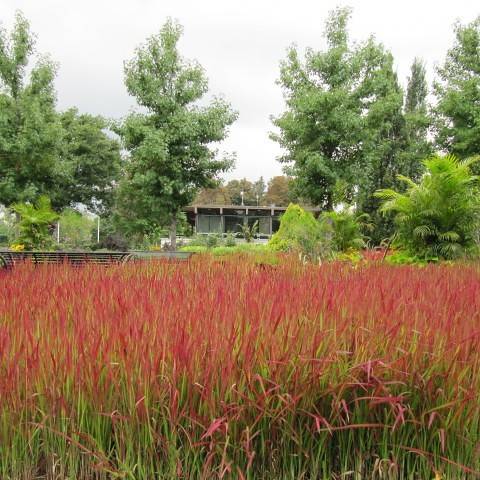
Japanese blood grass
Imperata cylindrica 'Red Baron'
Cycle:
Perennial
Watering:
Frequent
Hardiness Zone:
5
Flowers:
Flowers In Summer
Sun:
Part sun/part shade
Soil:
Bog, Humus rich
Fruits:
Fruits In Summer Ready In Summer
Leaf:
Yes
Growth Rate:
High
Salt Tolerant:
Yes
Invasive:
Yes
watering
Himalayan balsam should be watered frequently and lightly, about 2 or 3 times a week. During warm summer months, the soil should be kept moist, but not soggy. During cooler months, allow the top inch or 2 inches of soil to dry out before watering again. If the soil becomes too dry, water the plants deeply and thoroughly until water flows from the bottom of the container. Discard any excess water.
sunlight
Himalayan balsam (Impatiens glandulifera) prefers part shade to full sun, so it is best to find a spot that gets at least 6 hours of sunlight per day. When available, direct sunlight will help the plant reach its full growth potential. However, too much direct sunlight will cause the Himalayan balsam to wilt and may lead to leaf burn. If possible, it is best to provide dappled shade during the hottest part of the day.
pruning
Himalayan balsam (Impatiens glandulifera) should be pruned on a regular basis. Pruning should take place during the summer and early fall months. This species of plant should be carefully pruned so as to not overly damage the plants. Start by cutting off any dead, diseased, or damaged sections. Then, select a few of the largest and oldest branches to cut off just above where a new branch is emerging from them (approximately 15 cm from the tip). Repeat this process all over the plant, only cutting off a few branches at a time, to avoid overwhelming the plant. Himalayan balsam should also be cut back to 15 cm in the spring, just before new growth appears. This will help keep the plant at an even height, allowing the new growth to flourish.
